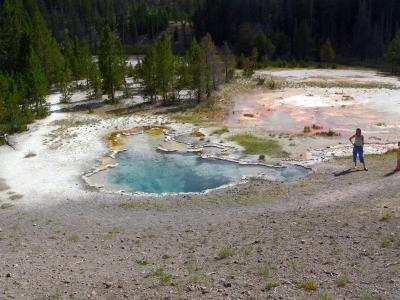
In the hot springs of Yellowstone National Park, a team of researchers partially funded by the National Science Foundation (NSF) discovered a new bacterium that transforms light into chemical energy. The discovery of the chlorophyll-producing bacterium, Candidatus chloracidobacterium (Cab.) thermophilum, is described in the July 27, 2007, issue of Science in a paper led by Don Bryant of Penn State University and David M. Ward of Montana State University.
Yellowstone National Park is a tourist’s wonderland because of its wildlife, mountains, geysers and hot springs. But the park is also a scientific reservoir that harbors what may be the world’s largest diversity of thermophilic (heat-loving) microorganisms.
Discovered in microbial mats in three of Yellowstone’s hot springs, Cab. thermophilum belongs to a new genus and species. It also belongs to the Acidobacteria phylum, a poorly characterized phylum that was not previously known to include bacteria capable of photosynthesis.